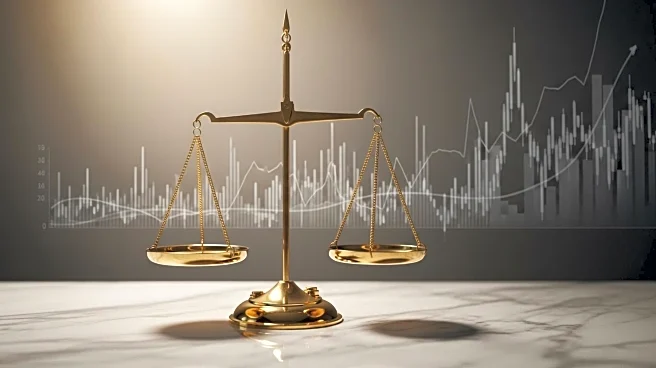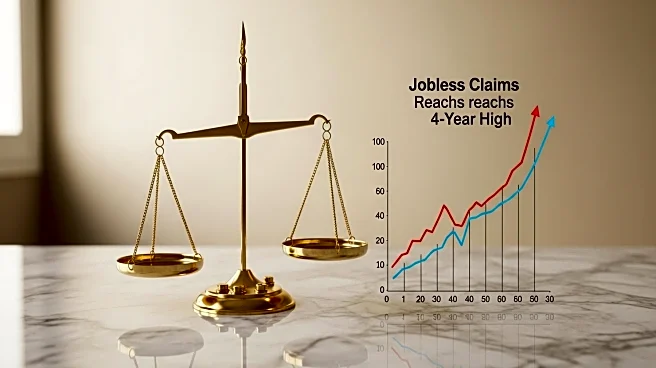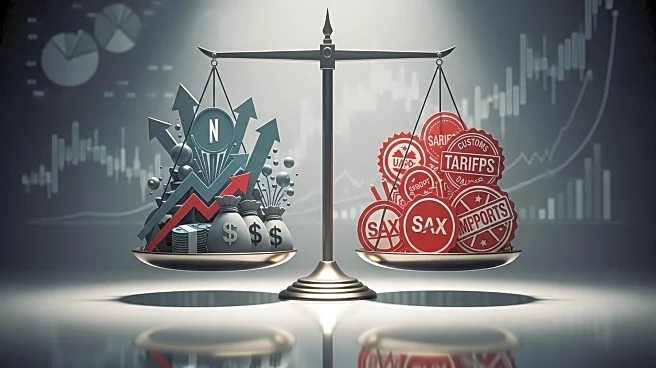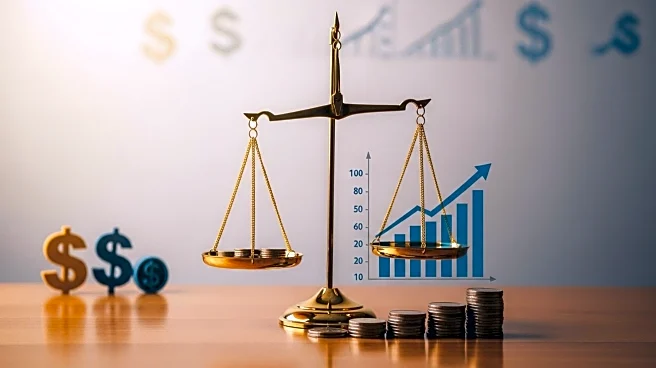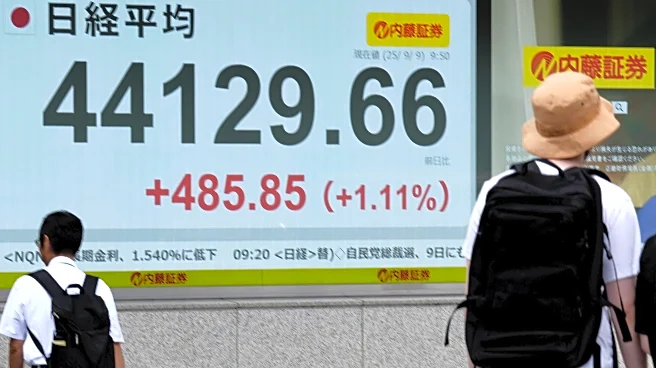What's Happening?
Inflation in the United States saw a slight increase in August, driven by companies passing the cost of Trump-imposed tariffs onto consumers. The consumer price index (CPI) revealed a 2.9% rise over the past year, marking the highest inflation rate since January. Core CPI, excluding energy and food costs, remained stable at 3.1% after a previous increase in July. Despite the inflation uptick, Wall Street remains optimistic about a potential interest rate cut by the Federal Reserve. The Fed, under pressure from President Trump, is considering a rate cut due to concerns over a weakening jobs market. Investors are anticipating a quarter-point rate cut, with current rates ranging from 4.25% to 5.5%. The Fed has been cautious about rate cuts, citing economic instability from federal immigration and trade policies.
Why It's Important?
The rise in inflation and the potential interest rate cut by the Federal Reserve have significant implications for the U.S. economy. Higher inflation can erode consumer purchasing power, while interest rate cuts can stimulate economic activity but may also lead to increased borrowing costs. The Fed's decision is crucial as it aims to balance inflation control with economic growth. The pressure from President Trump adds a political dimension to the Fed's decision-making process, potentially influencing monetary policy. The outcome will affect various stakeholders, including businesses, consumers, and investors, as they navigate the economic landscape shaped by tariffs and interest rate changes.
What's Next?
The Federal Reserve is scheduled to announce any changes to interest rates on September 17. The decision will be closely watched by investors and policymakers, as it could signal the Fed's approach to managing inflation and economic growth. The labor market's weakening condition, highlighted by revised job figures and rising unemployment, will be a key factor in the Fed's decision. Stakeholders, including businesses and consumers, will need to prepare for potential shifts in economic policy and its impact on market conditions.


